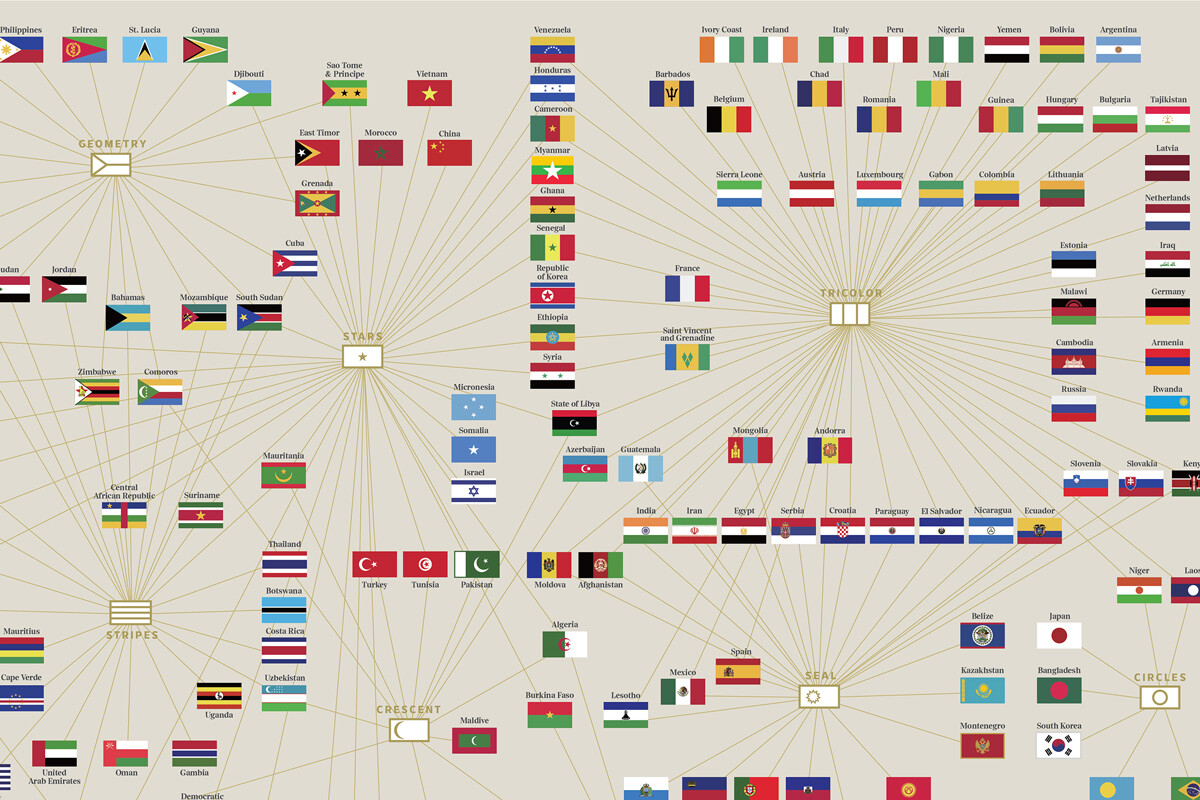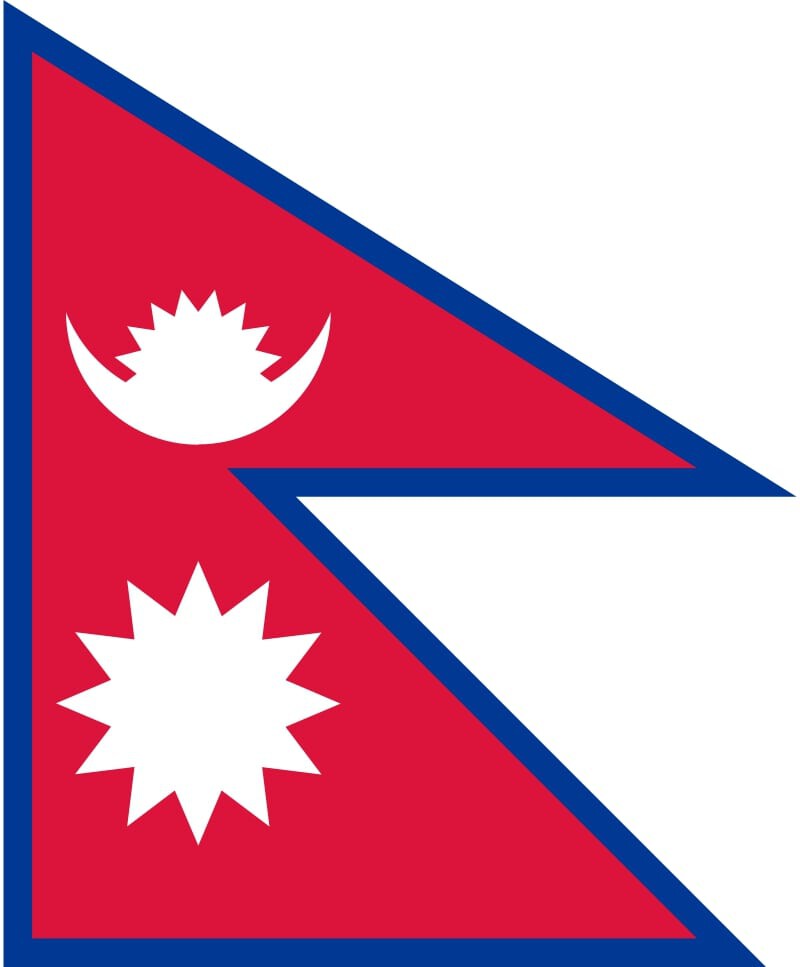
The colors and designs of the flags of the countries are not random decisions but are derived from the history, culture, or religion of the country to which they belong. Many have a common origin, and such “flag families” are often linked to traditions and geography. In Europe, for example, some of them show the Christian cross, which was used for years in the Crusades. Like the British flag, the Union Jack incorporates the Crosses of St George (England), St Andrew’s (Scotland), and St Patrick’s (Ireland). Also similar are those of Norway, Sweden, Finland, Denmark, Greece, and Switzerland.
The same is true of coats of arms, which became the basis for many flags after the introduction of heraldry to Europe in the 12th and 13th centuries. Although some of these symbols have disappeared from modern national flags, the colors used on the coats of arms remain those used by Poland, Belgium, Germany, Spain, Hungary, Luxembourg, and Monaco.
This graphic by Giulia De Amicis features flags of 196 internationally recognized countries, grouped according to the main design characteristics: color and pattern. It includes 193 member states of the United Nations, Vatican City, Palestine, and Taiwan.
Common shapes and aspect ratio
As we can see, most countries have flags in the form of a quadrilateral, mainly with an aspect ratio of 2:3 or 1:2. In contrast, the flag of Nepal stands out for its unique design. It consists of two triangular shapes with a white moon at the top and a white sun at the bottom. This unusual design has caused difficulties in its reproduction on a large scale. In the 2016 Summer Olympics, for example, it was decided to place it on a white rectangular cloth with the same shape as other flags.

The most common pattern on most flags is the tricolor, in either a vertical or horizontal orientation, and is present in 68 countries. The stars too, with 40 flags, while the stripes fly on 29 of them. But there are plenty of other designs to consider, such as the geometric ones used by Cuba and South Africa, crosses like the UK’s Union Jack, and circles like those of Japan and South Korea.
But not all flags fall into a single category, like Pakistan’s green and white flag with a crescent and star, or many that include a British flag in their design. The symbolism and meaning of each item can also change over time, often as a result of major political changes.
What are the most popular colors?
The most popular color is red, with 20% of the countries on the chart featuring it on their flags. In vexillology, the study of flags, red is believed to be a symbol of power, bravery, revolution, and vitality, as well as a war about the bloodshed of the past. Green is the second most used color, with 15% of countries incorporating it, followed by black (14%), purple (12%), white (11.5%), light blue (11%), and blue (9.5%). Yellow is the least popular, with only 7% of countries using it.
Some color combinations are often adopted by neighboring countries. For example, red, white, green, and black are seen on various flags of Arab nations. Similarly, the combinations of green, red, and yellow are often a symbol of pan-African countries.
Symbolism and Origins in Design
The red, white, and blue stripes on the flag of the Netherlands are associated with the concepts of freedom and a republican form of government, due to their use in the long war of independence. A link was also present in France’s adoption of the same colors, but with vertical rather than horizontal stripes, after the French Revolution of 1789. However, the newly independent United States’ choice of those colors for the bars and stars was based on their affiliation with Great Britain.
The flag of the Soviet Union was red with a yellow hammer and sickle, the traditional symbol of revolution for communists. China also adopted a red flag based on the communist associations of that color.
In the Middle East, Islam has limited the choice of flag colors to the four traditional Muslim colors of red, white, green, and black. Also, the star and crescent motif is present on the flags of Turkey, Algeria, and Tunisia. Other mainly Muslim countries, such as Pakistan and Malaysia, also use the star and crescent as a religious signs.
Almost all the flags of the sub-Saharan African countries have many similarities. And they can be grouped into two groups: the flags of the member states of the British Commonwealth and those of the countries that were under French colonial control. The former have horizontal tricolors and usually include green, blue, black, and white, while the latter are green, yellow, and red.
In Asia, there is a lot of diversity in designs. The most common is the use of a religious or political symbol on a solid color background. There are flags with the sun (Japan, Nepal, Taiwan), a wheel (India), the yin-yang symbol (South Korea, Mongolia), a dragon ( Bhutan ), and a sword (Sri Lanka). Australia and New Zealand use modified versions of a type of British flag, the blue ensign.
Finally, the former political union of five of the Central American countries is commemorated by the conservation of the old blue-white-blue flag, which has been modified by each country. And the common historical heritage of Venezuela, Colombia, and Ecuador is displayed in nearly identical yellow, blue, and red tricolor flags.

Sharlene Meriel is an avid gamer with a knack for technology. He has been writing about the latest technologies for the past 5 years. His contribution in technology journalism has been noteworthy. He is also a day trader with interest in the Forex market.









